Q
Is the Proton S70 a SUV or MPV?
The Proton S70 is a four - door sedan, neither an SUV nor an MPV. It belongs to the B - class sedans under the Proton brand, targeting both family and business use. Its design emphasizes comfort and practicality. It is equipped with a 1.5T turbocharged engine and comes with a rich array of technological features, making it suitable for daily commuting and family use among Malaysian consumers.
In the Malaysian market, sedans, SUVs, and MPVs each have a clear classification. Sedans typically feature a low center of gravity and a streamlined body, SUVs focus on high ground clearance and versatility, while MPVs are known for their spacious seating and cargo - carrying capacity. As a sedan, the Proton S70 is more suitable for users who pursue driving control and fuel efficiency.
If you're thinking about buying a new car, you can choose the appropriate type according to your own needs. For example, if you need more seats and space, you can take a look at Proton's MPV models like the Proton Exora. Or if you prefer a high driving position and good passability, SUVs such as the Proton X50 and X70 are also good options.
Special Disclaimer: This content is published by users and does not represent the views or position of PCauto.
Related Q&A
Q
Is the Proton S70 fuel consumption?
As the latest four - door sedan launched by the Proton brand, the Proton S70's fuel economy performance meets the mainstream level of Class B sedans. The official combined fuel consumption data is 6.0 - 6.4 liters per 100 kilometers (the specific figure varies depending on the driving mode and road conditions). This result is quite reasonable for the power combination of a 1.5 - liter turbocharged engine and a 7 - speed dual - clutch transmission.
The actual fuel consumption is affected by driving habits. For example, it may rise to 7.5 - 8.0 liters in congested urban areas in Kuala Lumpur, while it can drop to around 5.5 liters during high - speed cruising. It is recommended that car owners optimize fuel consumption through regular maintenance (especially replacing the air filter and spark plugs), maintaining a reasonable tire pressure (210 - 230 kPa), and avoiding rapid acceleration.
It's worth noting that the fuel consumption data of competing models in the same class, such as the Honda City and Toyota Vios, also fall within a similar range. This reflects that the current small - displacement turbocharging technology has become the mainstream solution for balancing power and fuel consumption. For users who often drive long - distance, the S70's 40 - liter fuel tank, combined with this fuel - consumption level, can provide a cruising range of approximately 600 kilometers, which can fully meet the inter - city commuting needs on the Malay Peninsula.
Q
Does the Proton S70 have a sunroof?
The current model configurations of the Proton S70 do not come with a sunroof. This car focuses more on performance in terms of power, intelligent technology, and practicality. For example, it is equipped with a 1.5T turbocharged engine and a wide range of driving assistance systems. For Malaysian consumers, while a sunroof can enhance interior lighting and create a more open - feeling cabin, it may also increase the interior temperature in the tropical climate. That's why many local models prioritize optimizing air - conditioning efficiency and heat insulation performance.
If you particularly value the sunroof configuration, you can consider some high - end versions of other models in the same class, such as the Honda City or the Toyota Corolla Altis. However, you need to be aware of the maintenance costs of the sunroof and the potential rattling issues that may occur over long - term use.
The Proton S70 is more positioned towards family practicality and cost - effectiveness. Its standard - equipped LED headlights, digital dashboard, and Advanced Safety Assist system can already meet the daily needs of most users. It is recommended that you weigh the priority of configurations based on your actual usage scenarios.
Q
How heavy is the Proton S70?
The weight of the Proton S70 is approximately between 1,300 and 1,400 kilograms, specifically depending on the vehicle configuration and powertrain. As a four - door sedan under Proton, this car adopts a lightweight design and an efficient powertrain, ensuring good fuel economy and driving performance. For Malaysian consumers, the Proton S70 has a moderate weight. It not only guarantees stability during high - speed driving but also doesn't significantly increase fuel consumption, making it highly suitable for daily commuting and long - distance driving.
Moreover, the vehicle weight also has a certain impact on the suspension system and braking performance. The Proton S70 has been carefully tuned in this regard, offering a comfortable driving and riding experience and reliable braking effects.
If you're interested in more details of the Proton S70, such as engine performance or safety features, you can further learn about its 1.5 - liter turbocharged engine and a wealth of advanced safety technologies, which are the highlights of this model.
Q
How many cylinders in the S70?
As a classic model from the late 1990s to the early 2000s, the Volvo S70's engine configurations vary depending on the market and version. The most common one is the inline 5-cylinder engine (that is, 5 cylinders), such as the 2.4-liter or 2.5-liter turbocharged versions. This engine is well - known for its smoothness and durability, which is suitable for Malaysia's diverse road conditions. For Malaysian users, the inline 5-cylinder layout strikes a balance between power output and fuel economy. Meanwhile, Volvo's engine technology also emphasizes safety and environmental protection standards, meeting the local people's trust in European cars. If you're considering a used S70, it's recommended to check the engine maintenance records because the number of cylinders directly affects the complexity of repairs and the supply of spare parts. Special attention should be paid to the maintenance of the cooling system and ignition coils in Malaysia's humid climate. In addition, modern Volvo models generally use 4-cylinder engines or hybrid power, but the 5-cylinder design of the S70 remains a unique symbol in the hearts of car enthusiasts. Its sound and power characteristics were quite distinctive among cars of the same class back then.
Q
Is the Proton S70 Heavier Than the X50?
The weight of the Proton S70 is approximately between 1,325 kg and 1,345 kg, depending on different versions. Meanwhile, the Proton X50 weighs between 1,300 kg and 1,330 kg. There isn't a significant difference in weight between the two, but as a three - box sedan, the S70's body structure focuses more on high - speed stability, so it's slightly heavier. In contrast, as a compact SUV, the X50's body design leans more towards flexibility and passability, and its weight distribution is also different.
In the Malaysian market, both models adopt Proton's latest technological platforms. The S70 is built on the BMA platform, while the X50 shares the platform with the Geely Binyue. Both cars have done well in lightweight design, ensuring body rigidity while also taking fuel economy into account.
For consumers, when making a choice, besides the weight, they can also consider space requirements, driving habits, and usage scenarios. For example, the S70 is more suitable for long - distance driving, while the X50 is better for urban commuting and occasional light off - road driving. Both cars demonstrate Proton's advantages in local production and tuning, and can well adapt to the road conditions and climate in Malaysia.
Q
How many seats does the Proton S70 have?
The Proton S70 is a five-seater sedan with a standard four-door, three-box design, offering Malaysian consumers a comfortable seating space and a practical family car experience. As the latest model under the Proton brand, the S70 focuses on ergonomics in its seat design. The front seats provide excellent support, while the rear seats balance legroom and seating comfort, making it suitable for long-distance travel or daily commuting. The trunk of this car also has a relatively large capacity, which can meet the storage needs of family trips.
The Proton S70 is equipped with a 1.5-liter turbocharged engine, delivering a well-balanced performance. Meanwhile, it comes with a rich array of technological features, such as an advanced infotainment system and driving assistance functions, further enhancing driving convenience and safety.
For Malaysian consumers, the Proton S70 is an outstanding choice in terms of cost-effectiveness, especially for family users who value practicality and comfort. Its localized design and manufacturing also ensure the convenience of after-sales service.
Q
How much torque does a Proton S70 have?
As the latest sedan model of the Proton brand, the Proton S70 is equipped with a 1.5-liter turbocharged four-cylinder engine. Its maximum torque output reaches 226 Nm and is continuously delivered within a wide speed range of 1,500 to 4,000 rpm. This tuning is particularly suitable for the common scenarios of urban congestion and highway overtaking in Malaysia. This torque data stands out among 1.5T models in the same class. Paired with a simulated 7-speed CVT transmission, it can balance smoothness and fuel economy.
It's worth noting that the low-speed and high-torque characteristics of the turbocharged engine give the S70 an edge when starting and climbing hills. The width of the torque peak platform also means that you don't need to downshift frequently to get sufficient power in daily driving. For Malaysian consumers, this kind of power configuration can not only meet the needs of family cars but also provide enough driving confidence during occasional long-distance trips. At the same time, it meets the local market's emphasis on fuel efficiency.
If you want to further understand the impact of torque on the driving experience, you can observe the vehicle's performance on mountain roads such as Genting Highlands. Ample torque can significantly reduce the power loss when climbing hills.
Q
Is the Proton S70 turbo?
Yes, the Proton S70 is equipped with a 1.5-liter turbocharged engine. This engine can deliver 150 horsepower and 226 Nm of torque. Paired with a 7-speed dual-clutch transmission, it offers decent power performance and fuel economy. As a four-door sedan under the brand, the Proton S70 inherits the technological and design advancements of Proton in recent years, especially in the powertrain. The application of turbocharging technology makes it more competitive among models in the same class. The advantage of the turbocharged engine lies in its ability to provide stronger torque at low speeds, which is suitable for the frequent stop-and-go traffic conditions in Malaysian cities. Meanwhile, it can also maintain good power reserve during high-speed driving. For consumers who focus on power performance, the turbocharged engine of the Proton S70 is a worthy option to consider. Moreover, Proton's local service network can also provide convenient after-sales support for car owners. If you're interested in turbocharging technology, you can also learn about its working principle and the precautions for daily maintenance to ensure the vehicle stays in good condition for a long time.
Q
Is the Proton S70 a hybrid?
The Proton S70 isn't a hybrid model. It's a traditional four-door sedan powered by fuel. It's equipped with a 1.5-liter turbocharged gasoline engine and paired with a CVT transmission. It belongs to the new sedan models under the Proton brand. At present, Proton's hybrid technology is mainly applied to SUV models like the X90, which uses a 48V mild-hybrid electric vehicle (MHEV) system. As a sedan focusing on economy, practicality and sporty design, the S70 still relies on fuel power.
For Malaysian consumers, if they're considering fuel-saving and eco-friendly options, they can keep an eye on Proton's potential new-energy models in the future, such as the rumored all-electric Persona or Iriz. However, at this stage, the S70 is more suitable for users who pursue power performance and cost-effectiveness.
Hybrid technology is gradually becoming popular in the Malaysian market. Japanese models like the Toyota Corolla Cross Hybrid or the Honda City RS e:HEV also offer more choices. Nevertheless, the advantage of the Proton S70 lies in the high cost-effectiveness of parts and the convenience of after-sales service of this local brand. It's suitable for family users with limited budgets who need large space and rich configurations.
Q
What is the horsepower of Proton S70?
The Proton S70 is equipped with a 1.5-liter turbocharged four-cylinder engine, which delivers a maximum horsepower of 150 and a peak torque of 226 Nm. It's paired with a 7-speed dual-clutch transmission, and its power performance is more than enough to meet the needs of daily driving and highway cruising. This engine adopts direct injection technology, which not only improves fuel efficiency but also optimizes power output. It's well-suited to Malaysia's diverse driving environments and can handle both city commuting and long-distance trips.
As an important model under the brand, the Proton S70 showcases Proton's technical expertise in powertrain systems. Moreover, its suspension setup strikes a good balance between comfort and handling, making it suitable for local road conditions.
For readers who want to learn more about automotive knowledge, they can focus on the advantages of turbocharging technology. For instance, it can provide ample torque at low engine speeds, making it easier for the vehicle to start and overtake. Meanwhile, the dual-clutch transmission enables quick gear changes, enhancing driving pleasure and fuel economy.
These features of the Proton S70 make it a highly competitive option in its class, especially for Malaysian consumers who value cost-effectiveness and practicality.
Latest Q&A
Q
What is the engine power of the 2018 Volkswagen Vento?
The 2018 Volkswagen Vento available in the Malaysian market comes equipped with a 1.6-liter naturally aspirated four-cylinder engine, churning out 105 horsepower (77 kilowatts) and a peak torque of 153 Newton-meters. It's paired with either a 6-speed automatic or a 5-speed manual gearbox. This engine is known for its reliability and smooth power delivery, making it a solid fit for city driving and daily commutes. As Volkswagen's entry-level sedan, the Vento strikes a good balance between fuel efficiency and maintenance costs, aligning well with Malaysian consumers' focus on practicality and dependability. It's worth noting that while engine power is a key metric for vehicle performance, real-world driving feel is also shaped by factors like transmission tuning, vehicle weight, and aerodynamics. Prospective buyers should definitely take it for a test drive to get a sense of how everything works together. Volkswagen has a well-established dealer network in Malaysia, offering professional technical support and genuine parts availability, which helps ensure a stable long-term ownership experience.
Q
What is the price of the 2018 Volkswagen Vento?
In Malaysia's used car market, the 2018 Volkswagen Vento typically ranges from RM50,000 to RM70,000. The exact price depends on factors like condition, mileage, trim level, and location—high-spec or well-maintained examples might push close to RM80,000. As VW's entry-level sedan, the Vento stands out for its solid German-engineered chassis and the durability of its 1.6L MPI engine (105hp), paired with a 6-speed auto gearbox. It's a solid choice for city driving, returning around 6.5L/100km. Standard kit includes dual airbags, ABS, and ESP, with some variants adding reverse sensors, though tech features like a touchscreen infotainment system often require post-purchase installation.
It’s worth noting that VW’s resale value in Malaysia is somewhat impacted by perceived maintenance costs. Prospective buyers should definitely get a PUSPAKOM inspection, check the original service records, and consider cross-shopping against the same-year Honda City or Toyota Vios. Those Japanese models have bigger local followings and easier parts availability, but the Vento still holds an edge when it comes to high-speed stability.
Q
How much horsepower does a 2018 Vento have?
The 2018 Volkswagen Vento model available in the Malaysian market features a 1.6-liter MPI naturally aspirated engine delivering 105 horsepower and 153 Nm of torque. This engine prioritizes fuel efficiency and durability, making it well-suited for daily urban driving. It is paired with a 6-speed automatic transmission that provides smooth gear shifts. As Volkswagen's entry-level sedan, the Vento has gained popularity among Malaysian families for its solid German chassis tuning and reliability. While its power delivery isn't particularly impressive, it fully meets typical household needs and delivers commendable fuel efficiency. It's worth noting that different markets may offer distinct engine configurations, but the Malaysian market primarily features this 1.6L engine variant. When purchasing a used Vento, buyers should verify the specific configuration by checking the vehicle identification plate or the original owner's manual. Those seeking more power may need to consider higher-tier models, but the Vento delivers solid value for money and the expected build quality of a Volkswagen at this price point.
Q
Is the 2024 Mazda CX-5 petrol or diesel better?
The 2024 Mazda CX-5 is available in both gasoline and diesel variants in the Malaysian market. The optimal choice depends primarily on your driving needs. The gasoline model features 2.0L and 2.5L Skyactiv-G naturally aspirated engines, delivering smooth power output and lower maintenance costs. It excels for urban commuting and daily family use, particularly benefiting drivers who frequently make short trips. The diesel variant features a 2.2L Skyactiv-D turbocharged engine, delivering greater torque and superior fuel efficiency. It excels for long-distance driving or frequent cargo transport, though diesel vehicles typically carry higher purchase and maintenance costs. Given Malaysia's relatively low diesel prices, the diesel model may prove more economical over extended use for high-mileage drivers. Both models come standard with Mazda's i-Activsense safety suite, and their interior quality and handling performance are consistent. Note that diesel vehicles demand higher fuel quality standards; regular maintenance at authorized service centers is recommended. If you prioritize a quiet, comfortable driving experience, the gasoline model is preferable. For those focused on fuel efficiency and responsive power delivery, the diesel variant is worth considering.
Q
How many cc is the 2024 Mazda CX-5?
The 2024 Mazda CX-5 hits the Malaysian market with two petrol engine choices: the 2.0-litre and 2.5-litre Skyactiv-G naturally aspirated units. The 2.0L checks in at 1998cc, while the 2.5L comes in at 2488cc. Both powerplants leverage Mazda's clever Skyactiv tech, which strikes a nice balance between fuel efficiency and power delivery—ideal for both Malaysian city commutes and longer highway hauls.
Now, naturally aspirated engines are known for their linear power delivery at higher revs and generally lower maintenance costs, though they might not quite match turbocharged engines for low-end torque. But Mazda's done a solid job with the tuning here, so the CX-5 still feels plenty responsive in day-to-day driving.
For Malaysian buyers, the 2.0-litre variant makes a lot of sense if you're mostly zipping around the city. On the other hand, if you often carry extra passengers, load up the boot, or just want that little bit more grunt when you need it, the 2.5-litre is the way to go. Factor in the CX-5's reputation for sharp handling and that eye-catching Kodo design language, and it's definitely a strong contender in the mid-size SUV segment.
View MoreRelated News

The fifth-generation Geely Emgrand car photos released, with upgrades in body size and power system
WilliamSep 16, 2025

Proton S70 Interior Revealed: More Advanced Technology Features
MichaelJul 2, 2025
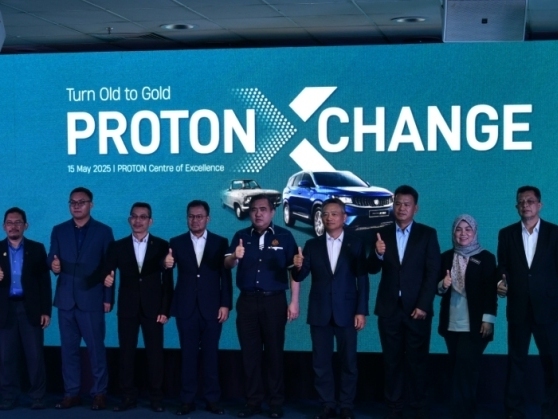
Proton Xchange: Get RM2000 Extra for Your Old Vehicle!
JamesMay 21, 2025
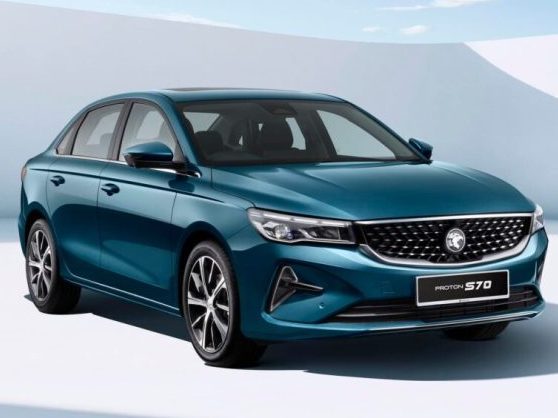
Proton S70 Price Revealed: Complete Buying Guide for Your Best Deal
RobertApr 9, 2025

Proton S70 sales not meeting expectations? But its prototype sells tens of thousands of units every month in China
JamesDec 25, 2024
View More










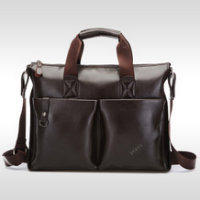
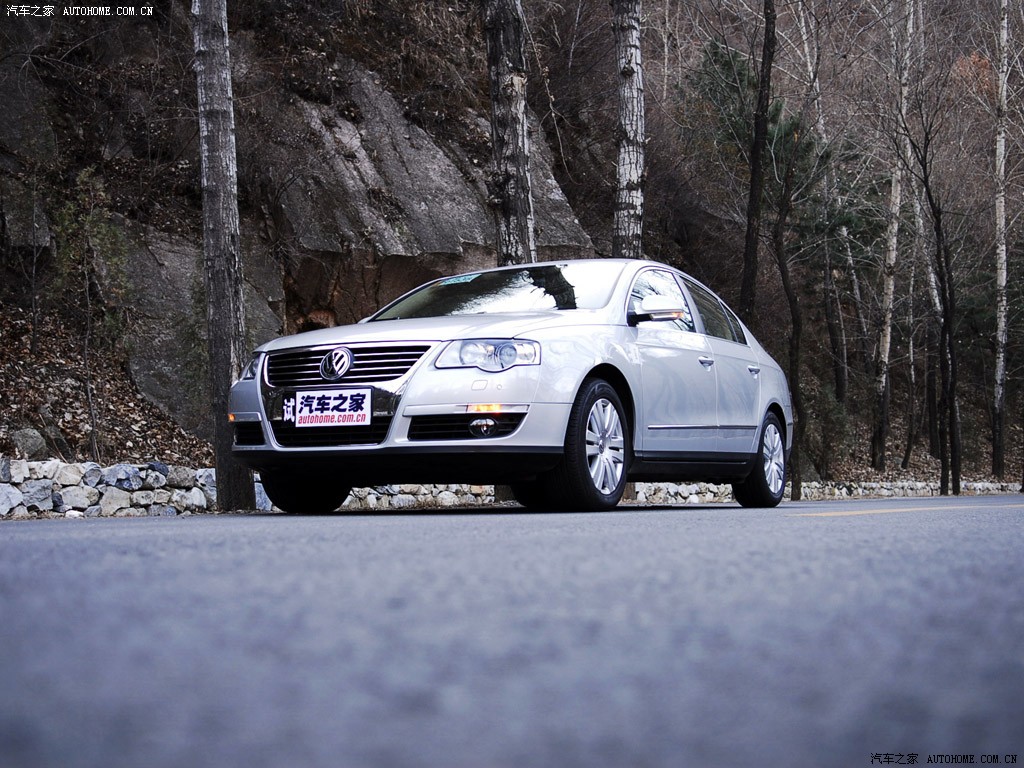
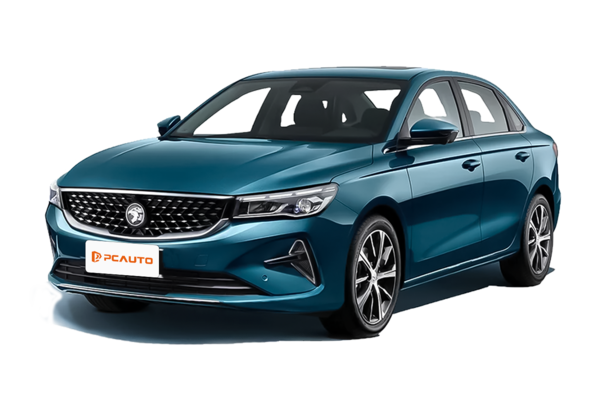





Pros
Cons